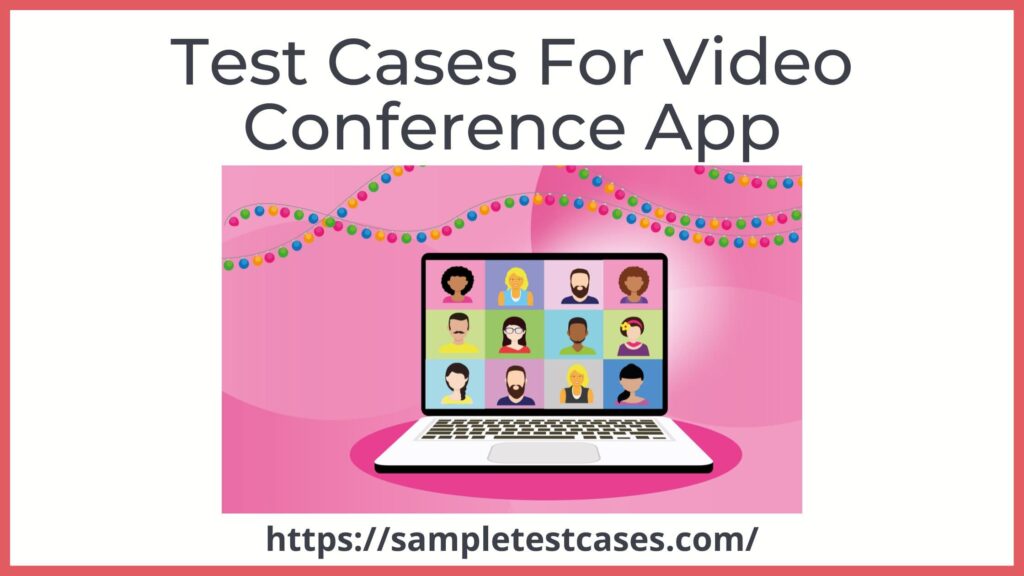Video conferencing has become an integral part of communication in today’s remote work environment. These apps allow users to connect with others from anywhere in the world and collaborate in real-time. In this blog post, we will discuss some essential test cases for video conferencing app and Video Calling App that can help ensure its quality, performance, and user-friendliness.
Positive Test Cases For Video Conferencing
- Connection Test: Verify that the video conference app can establish a connection between two or more devices and ensure that the connection is stable and does not drop during the session.
- Video Quality Test: Verify that the video conference app can deliver high-quality video that is clear, smooth, and without any distortion. Test the video quality under different network conditions and verify that the app can adjust to varying bandwidths.
- Audio Quality Test: Verify that the video conference app can deliver clear and audible audio that is synchronized with the video. Test the audio quality under different network conditions and verify that the app can adjust to varying bandwidths.
- Screen Sharing Test: Verify that the video conference app can share screens with other participants and ensure that the shared screen is clear, readable, and without any lag.
- Chat Test: Verify that the video conference app can support chat functionality and ensure that the chat messages are delivered in real-time and can be easily read.
- Recording Test: Verify that the video conference app can record the conference session and ensure that the recording is of high quality, clear, and easily accessible.
- Compatibility Test: Verify that the video conference app is compatible with different devices and operating systems and ensure that the app can deliver the same quality and features across all platforms.
- User Interface Test: Verify that the video conference app has a user-friendly interface that is easy to navigate and understand, and ensure that the app provides clear instructions on how to use its features.
Negative Test Cases For Video Conferencing
- Connection Failure Test: Verify that the video conference app can handle connection failures, such as network outages, server crashes, and device malfunctions, and provide clear error messages to the user.
- Poor Network Test: Verify that the video conference app can handle poor network conditions, such as low bandwidth, high latency, and packet loss, and ensure that the app can adjust to varying network conditions.
- Audio Distortion Test: Verify that the video conference app can handle audio distortions, such as echo, noise, and feedback, and ensure that the app can adjust audio settings to minimize distortion.
- Video Distortion Test: Verify that the video conference app can handle video distortions, such as pixelation, blurring, and freezing, and ensure that the app can adjust video settings to minimize distortion.
- User Limit Test: Verify that the video conference app can handle a large number of users and ensure that the app can manage the bandwidth and resources required to support a high number of participants.
- Compatibility Failure Test: Verify that the video conference app can handle compatibility failures, such as incompatible devices, operating systems, and browsers, and provide clear error messages to the user.
- Security Test: Verify that the video conference app can handle security threats, such as hacking, data breaches, and unauthorized access, and ensure that the app has robust security features, such as encryption and authentication.
- Integration Test: Verify that the video conference app can integrate with other apps, such as calendar apps, chat apps, and productivity apps, and ensure that the integration does not affect the quality or performance of the video conference.
Conclusion
Video conference apps have become essential tools for remote work, online education, and virtual Testing a video conference app using a range of positive and negative test cases can help identify potential issues, vulnerabilities, and weaknesses in the app and ensure that it meets the user’s expectations.
1.Test Cases For Video Streaming Applications
